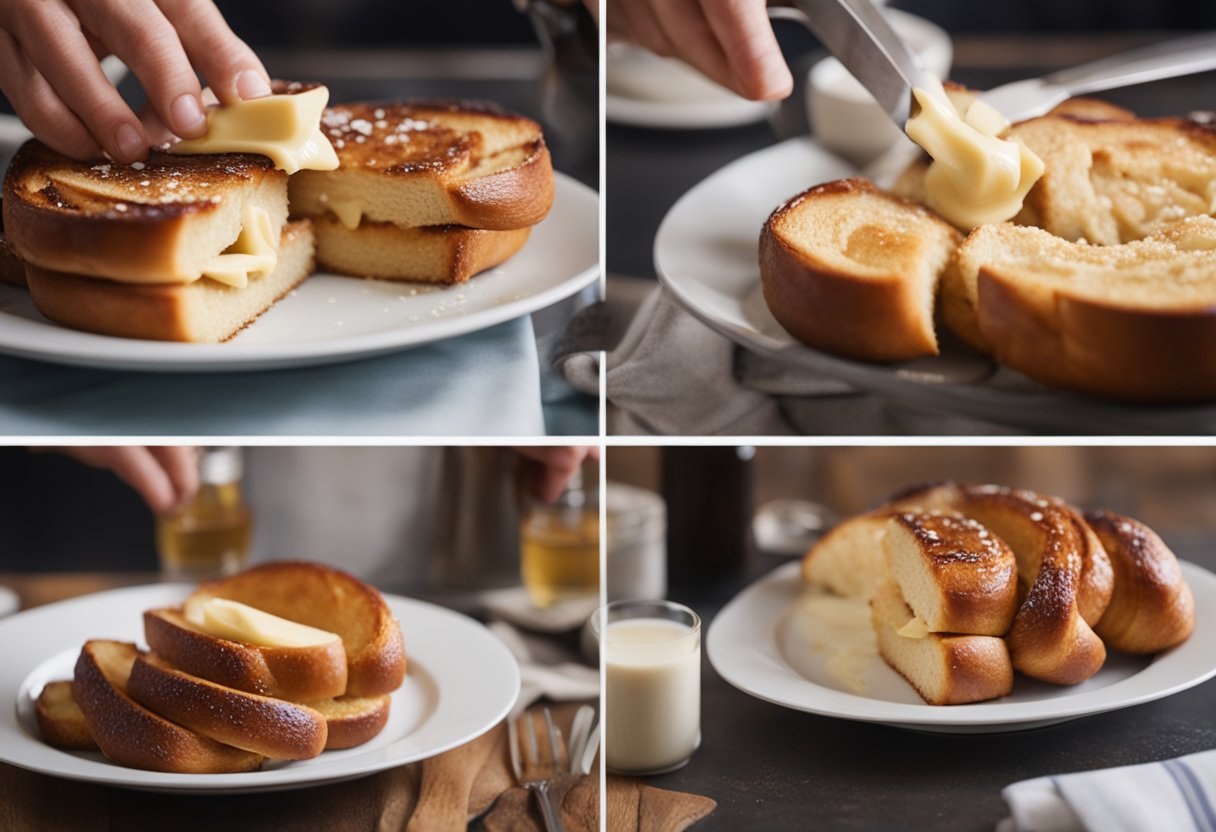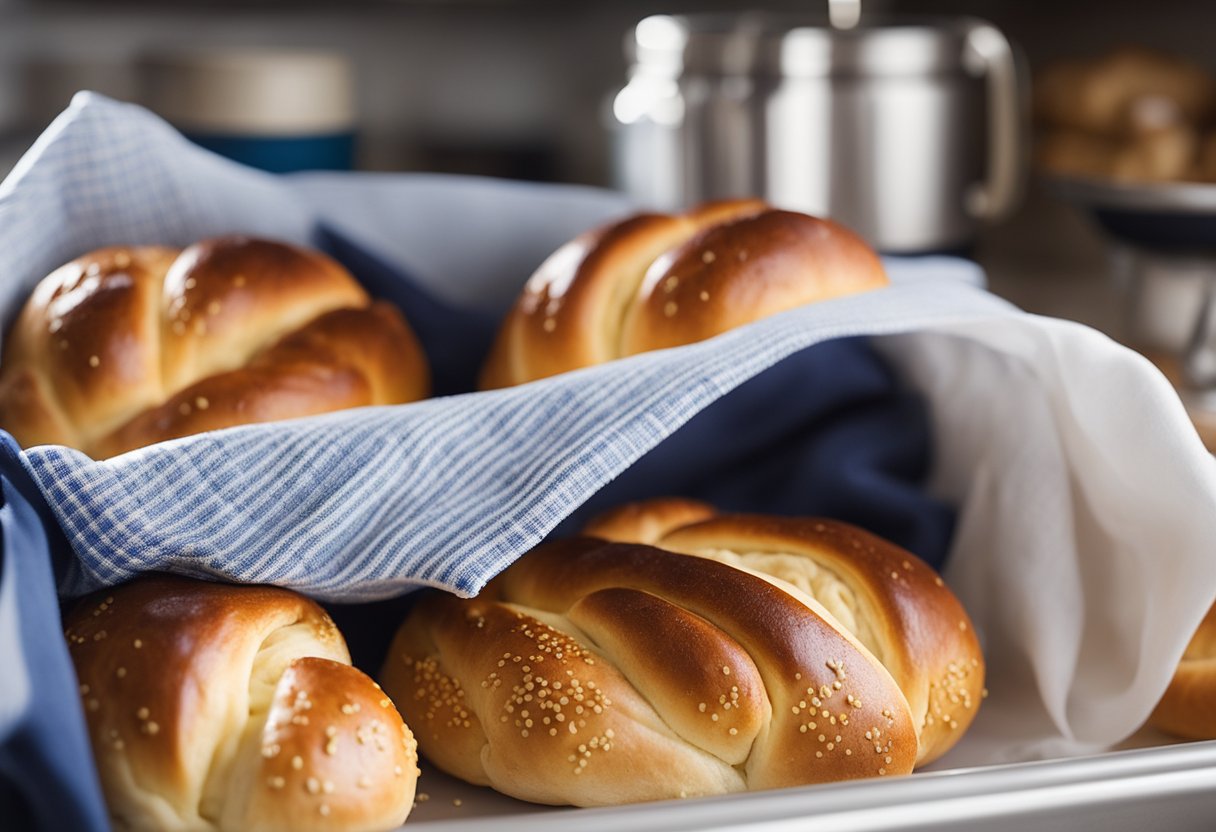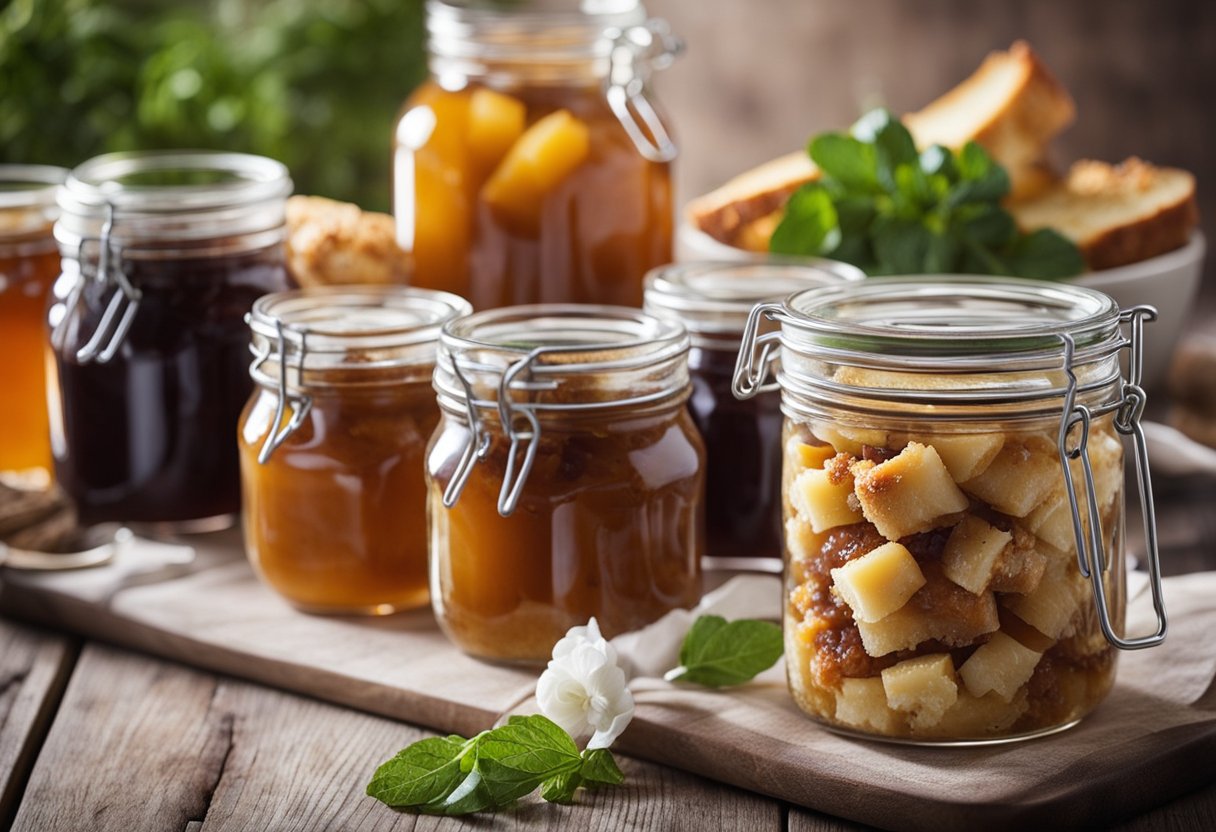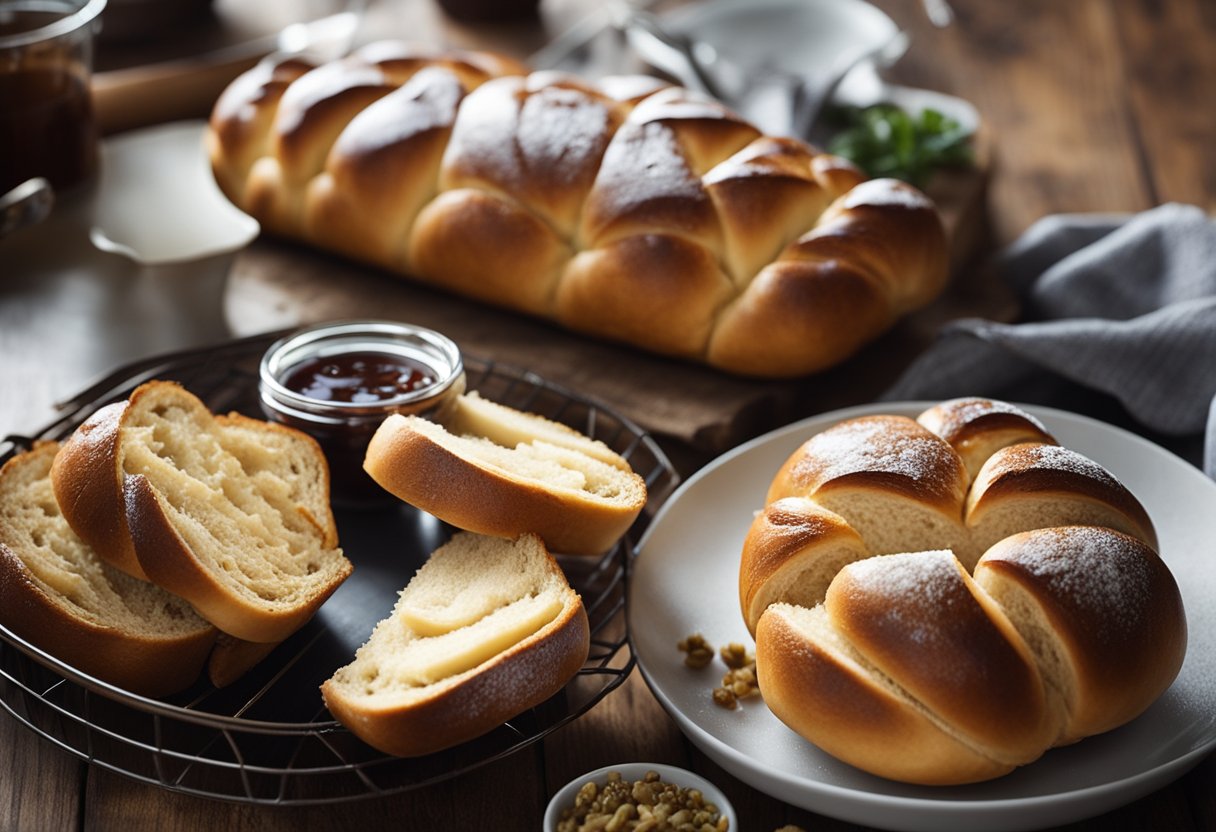Challah, the braided bread that graces many a Shabbat table, is a delightful symbol of Jewish tradition. After enjoying its rich, eggy taste during the meal, you might often find yourself with leftover challah. Jewish wisdom reminds us that nothing should go to waste, especially something as special as challah. So, what do you do when you have more challah than you can eat on Shabbat?

Leftover challah provides a versatile base for a variety of delicious dishes. From savory to sweet, the options for repurposing this bread are plentiful. Whether transformed into French toast for a Sunday brunch or used as the main ingredient in a hearty strata, challah’s dense and absorbent texture makes it ideal for soaking up flavors. Your culinary creativity can shine by giving a second life to your leftover challah, turning it into something that feels entirely new and exciting.
Think of leftover challah as a blank canvas. It’s an opportunity to experiment in the kitchen and perhaps find a new favorite recipe. You can dice it up into croutons for a salad, make a bread pudding that pairs with your afternoon coffee, or incorporate it into a savory stuffing for a twist on traditional recipes. Embrace the leftover challah as a chance to extend the joy of Shabbat into the rest of the week.
Creative Leftover Challah Recipes

Transform your leftover challah into delightful dishes with these easy-to-follow recipes. Whether you’re craving something savory or sweet, the buttery richness of challah provides the perfect foundation for these tasty treats.
Savory Challah Strata
A Savory Challah Strata is like a breakfast casserole, ideal for using up your challah. You’ll layer cubed challah with shredded cheese, diced tomatoes, and fresh sage. Whisk together eggs and milk, pour over the bread mixture, and bake until golden. Here’s what you need:
- Cubed challah bread
- 1 cup of milk
- 4 large eggs
- 1 cup of shredded cheese (cheddar or Swiss works well)
- A diced tomato
- A handful of chopped sage leaves
- Salt and pepper to taste
- A greased baking dish
- Preheat your oven to 350°F (175°C).
- Grease the baking dish and place the challah cubes at the bottom.
- Sprinkle cheese, tomato, and sage over the bread.
- In a bowl, whisk eggs and milk, season with salt and pepper.
- Pour the egg mixture over the bread layers.
- Bake for 45 minutes until the top is golden and the eggs are set.
Sweet Challah Bread Pudding
For a Sweet Challah Bread Pudding, combine cut challah with a luscious custard made from eggs, milk, vanilla, and add a dollop of cherry preserves for a fruity surprise. Finish off by baking until the bread is soaked through and the top is browned. Your ingredients:
- 1 large loaf of stale challah bread, cut into cubes
- 2 cups of milk
- 1 cup of cherry preserves
- 4 eggs
- 1 tablespoon of vanilla extract
- A pinch of cinnamon (optional)
- Cube the challah and place in a well-buttered baking dish.
- Blend together milk, eggs, vanilla, and cinnamon.
- Pour the custard over the challah cubes.
- Swirl in cherry preserves.
- Bake at 350°F (175°C) for about 35-40 minutes until set and tops are browned.
Homemade Bread Crumbs and Croutons
Lastly, for Homemade Bread Crumbs and Croutons, take the remainder of your challah, tear or cut it into small pieces, and turn them into versatile bread crumbs or crunchy croutons with olive oil, garlic, and herbs. They’re perfect for topping salads or making a crispy breading. For croutons:
- Challah bread cut into 1-inch cubes
- 3 tablespoons of olive oil
- 2 cloves of garlic, minced
- A mix of dried herbs (such as oregano, basil, thyme)
- Salt and pepper
- Preheat oven to 375°F (190°C).
- Toss the challah cubes with olive oil, garlic, herbs, salt, and pepper.
- Spread on a baking sheet in a single layer.
- Bake for 10-15 minutes, shaking the pan occasionally, until golden and crisp.
For bread crumbs, simply:
- Preheat your oven to 300°F (150°C).
- Tear the challah into very small pieces or pulse in a food processor.
- Spread on a baking sheet.
- Bake until dry, about 10-15 minutes.
- Cool and pulse again in a food processor to the desired consistency.
Transforming Leftover Challah for Breakfast
If your challah lingers after the feast, treat yourself to a delicious breakfast makeover. Indulge in the rich taste of homemade bread revitalized with sweet and savory flavors that will make your morning meal memorable.
Classic French Toast
To craft the Classic French Toast, grab your leftover challah and slice it into thick pieces. In a bowl, whip together:
- 4 eggs
- A splash of milk
- 1 teaspoon vanilla extract
- A pinch of cinnamon
Dunk each bread slice into the mixture, making sure both sides are well-coated. Melt butter in a pan and cook each side until golden brown. Serve warm with a generous drizzle of maple syrup.
Baked French Toast Casserole
If you’re hosting a brunch or simply want a fuss-free morning, the Baked French Toast Casserole is your go-to. Cut the challah into cubes and toss them into a glass baking dish. For the custard mixture, combine:
- 6 eggs
- 2 cups milk
- 1 tablespoon vanilla extract
- A dash of rum (optional)
- 1/2 cup brown sugar
Pour this over the bread cubes, let it soak overnight, and bake in the morning until it puffs and turns golden. This dish can serve multiple people and fills your kitchen with an inviting aroma.
Challah Breakfast Sandwiches
Take your breakfast sandwiches to the next level with Challah Breakfast Sandwiches. Slice the challah bread and lightly toast it. Scramble eggs, and if you like, add some cheese and a hint of garlic for extra flavor. Assemble your sandwich and serve warm. This hearty option is perfect for a protein-packed start to your day.
Preserving Leftover Challah for Later Use

Leftover challah can be a tasty treat for another day if preserved correctly. Whether you’re saving it for later consumption or transforming it into homemade breadcrumbs, proper techniques will maintain its quality and flavor.
Freezing and Reheating Tips
To freeze your challah, first, ensure it’s completely cooled to avoid condensation and ice crystals. Slice the challah if you prefer to use portions later on. Wrap each slice or the whole loaf in plastic wrap and then aluminum foil to protect it from freezer burn. For optimal freshness, consume your frozen challah within three months.
Reheating is just as important to retain the bread’s moisture and texture. Preheat your oven to 350 degrees Fahrenheit. If you froze slices, you can often reheat them directly from frozen; just place the challah on a baking sheet and cover it with foil. Heat for about 10 to 15 minutes, or until fully warm. A whole loaf might need up to 30 minutes.
Making Soft Breadcrumbs
Turn your challah into soft breadcrumbs for a variety of recipes as recommended by Food52. Here’s the process:
- Tear or cut the challah into small pieces.
- Spread the pieces in a single layer on a baking sheet.
- Dry in a 300-degree Fahrenheit oven for 10-15 minutes or leave at room temperature for a few hours.
Once your challah is sufficiently dry, use a food processor to pulse the pieces into breadcrumbs. Homemade breadcrumbs add a unique flavor to dishes and can be stored in the fridge for a couple of days, or freeze them in an airtight container for extended use.
Eco-Friendly Alternatives for Leftover Challah

When you find yourself with leftover challah, there are several eco-friendly options you can consider to reduce food waste and maintain sustainability.
Composting:
Leftover bread is great for composting. Your challah can contribute to a nutrient-rich compost pile that benefits your garden or community green spaces. Break the challah into smaller pieces to speed up the composting process. This way, you’re giving back to the Earth and aiding in waste reduction.
- Feed Your Garden:
- Crumble the challah into small bits.
- Mix into your compost bin or pile.
- Ensure to cover with other compost materials like leaves or grass clippings to balance.
Worm Bins:
If you have a worm bin, red wiggler worms are particularly fond of bread products. But remember to add in moderation, as too much can disrupt the balance of your worm bin.
- For Your Worms:
- Add small amounts of challah.
- Bury the pieces under the soil to prevent pests.
- Balance with other food scraps and carbon-rich materials like dried leaves.
Passover Cleaning:
In the spirit of Passover cleaning, where leavened products are often removed from the home, consider repurposing your leftover challah ahead of time. You can avoid waste by transforming it into bread crumbs, croutons, or even use it in recipes like French toast or bread pudding.
- Repurpose for Recipes:
- French Toast: Soak slices in an egg mixture and pan-fry.
- Bread Puddings: Cube and combine with a sweet custard.
- Croutons: Season and bake in the oven for salads.
By following these suggestions, not only do you get to enjoy your challah in various forms, but you also take meaningful steps toward a more sustainable lifestyle. Remember, every small action can lead to a significant positive impact on our environment.
Frequently Asked Questions

Leftover challah doesn’t mean the end of deliciousness. Discover sweet and savory ways to repurpose your bread and keep the taste bud joy alive.
How can I use leftover challah for a sweet breakfast treat?
You can easily turn your leftover challah into French toast. Soak slices in a mixture of beaten eggs, milk, vanilla, and a touch of cinnamon, then fry until golden brown. Top with maple syrup or fruit preserves for a delightful morning meal.
What savory dishes can I make with leftover challah bread?
Transform your leftover challah into a luxurious bread pudding by combining cubed bread with a savory custard of eggs and cream. Mix in cheese, cooked vegetables, or bacon bits for an added punch of flavor.
Is there a way to incorporate challah into a healthy casserole recipe?
Yes, you can create a healthier casserole by layering pieces of challah with lean proteins like turkey or chicken breast, steamed vegetables, and a light sauce made from low-fat cheese or yogurt-based concoctions. Bake until bubbly and browned on top.
Can I create a sandwich using challah as the main bread?
Absolutely! Challah’s soft texture makes it perfect for sandwich bread. Try a combination of turkey, cranberry sauce, and cream cheese for a post-holiday treat, or go classic with a generous helping of your favorite deli meats and cheeses.
In what ways can I repurpose challah for a dessert?
Consider using challah as the base for bread pudding. Soak it in a sweet custard mixture with ingredients like sugar, eggs, milk, vanilla, and raisins, then bake until set. Serve warm with a scoop of ice cream for extra indulgence.
What traditional recipes can be adapted using challah?
Challah can replace standard bread in most recipes, giving a new twist to traditional dishes like stuffing or stratas. It adds a richer flavor and a denser texture, making your classic recipes feel a bit more special.
